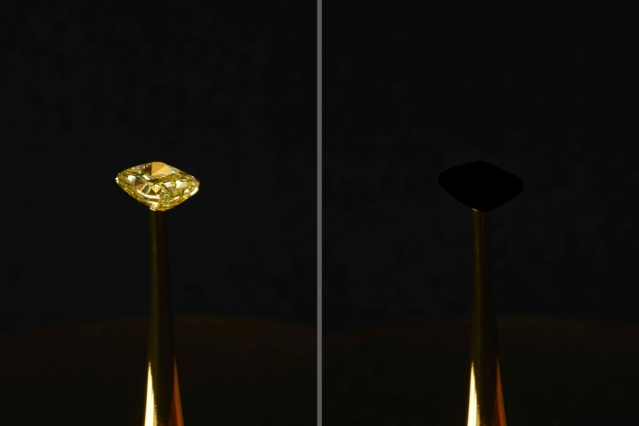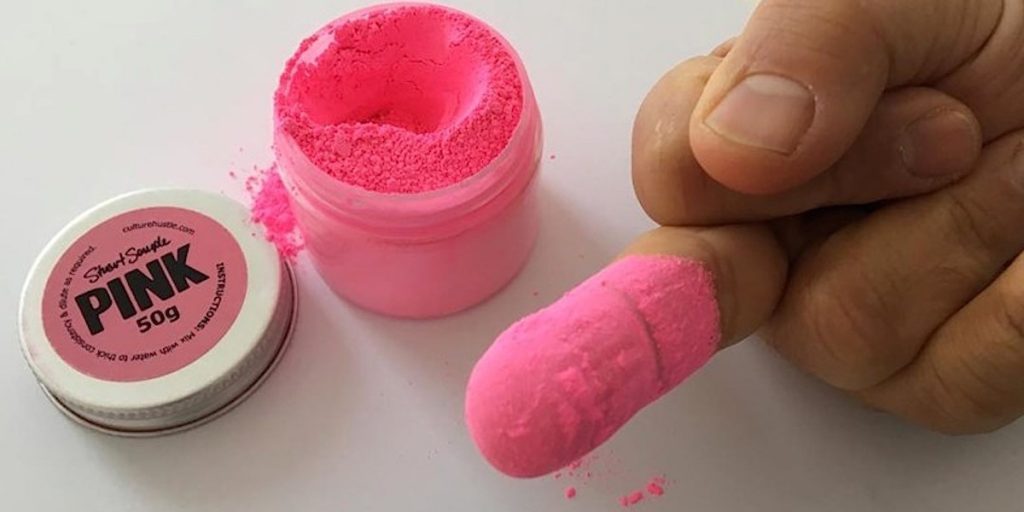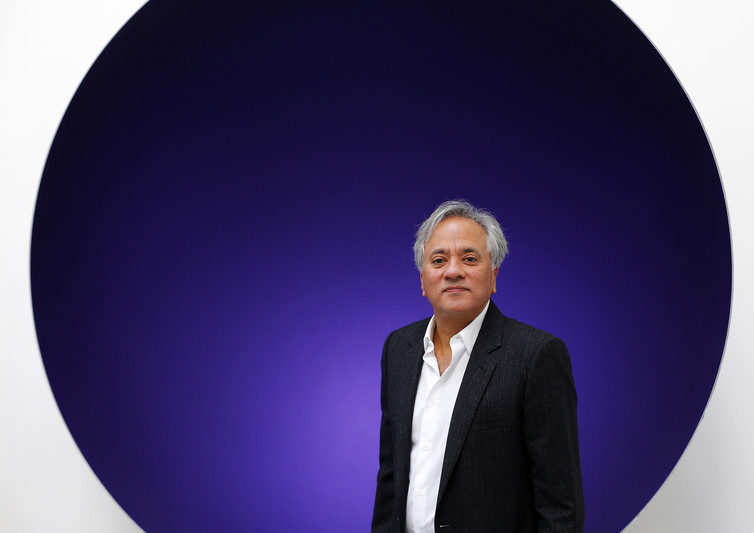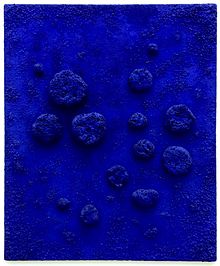The Biennale Arte (also known as the Venice Biennale) 2022: The Milk of Dreams runs from April 23 -November 27, 2022 with pre-openings on April 20, 21, and 22.
As part of the Biennale’s pre-opening, the ArtReview (international contemporary art magazine) and the Berggruen Institute (think tank with headquarters in Los Angeles, California) are presenting a talk on April 22, 2022, from the Talk on Art in the Age of Planetary Consciousness on the artreview.com website (Note: I cannot find an online portal so I’m guessing this is in person only),
Join the artists and ArtReview’s Mark Rappolt for this panel discussion – the first in a new series of talks in collaboration with Berggruen Arts – on 22 April 2022 at Casa dei Tre Oci, Venice
We live in an age in which we increasingly recognise and acknowledge that the human-made world and non-human worlds overlap and interact. In which actions cause reactions in a system that is increasingly planetary in scale while being susceptible to change by the actions of individual and collective agents. How does this change the way in which we think about art? And the ways in which we think about making art? Does it exist apart or as a part of this new consciousness and world view? Does art reflect such systems or participate within them? Or both?
This discussion between artists Shubigi Rao and Wu Tsang,who will both be showing new works at the 59th Venice Biennale, is the first in a new programme of events in which ArtReview is partnering with the Berggruen Institute to explore the intersections of philosophy, science and culture [emphasis mine] – as well as celebrating Casa dei Tre Oci in Venice as a gathering place for artists, curators, artlovers and thinkers. The conversation is chaired by ArtReview editor-in-chief Mark Rappolt.
…
Venue: Casa dei Tre Oci, Venice
Date: 22 April [2022]
Time: Entry from 4.30pm, talk to commence 5pm [Central European Summer Time, for PT subtract 9 hours]
Moderator: Mark Rappolt, Editor-in-Chief ArtReview & ArtReview Asia
Speakers: Shubigi Rao, Wu Tsang
RSVP: rsvp@artreview.com
About the artists:
Artist and writer Shubigi Rao’s interests include libraries, archival systems, histories and lies, literature and violence, ecologies, and natural history. Her art, texts, films, and photographs look at current and historical flashpoints as perspectival shifts to examining contemporary crises of displacement, whether of people, languages, cultures, or knowledge bodies. Her current decade-long project, Pulp: A Short Biography of the Banished Book is about the history of book destruction and the future of knowledge. In 2020, the second book from the project won the Singapore Literature Prize (non-fiction), while the first volume was shortlisted in 2018. Both books have won numerous awards, including AIGA (New York)’s 50 best books of 2016, and D&AD Pencil for design. The first exhibition of the project, Written in the Margins, won the APB Signature Prize 2018 Juror’s Choice Award. She is currently the Curator for the upcoming Kochi-Muziris Biennale. She will be representing Singapore at the 59th Venice Biennale.
Wu Tsang is an award-winning filmmaker and visual artist. Tsang’s work crosses genres and disciplines, from narrative and documentary films to live performance and video installations. Tsang is a MacArthur ‘Genius’ Fellow, and her projects have been presented at museums, biennials, and film festivals internationally. Awards include 2016 Guggenheim Fellow (Film/Video), 2018 Hugo Boss Prize Nominee, Creative Capital, Rockefeller Foundation, Louis Comfort Tiffany Foundation, and Warhol Foundation. Tsang received her BFA (2004) from the Art Institute of Chicago (SAIC) and an MFA (2010) from University of California Los Angeles (UCLA). Currently Tsang works in residence at Schauspielhaus Zurich, as a director of theatre with the collective Moved by the Motion. Her work is included in the 59th Venice Biennale’s central exhibition The Milk of Dreams, curated by Cecilia Alemani. On 20 April, TBA21–Academy in collaboration with The Hartwig Art Foundation presents the Italian premiere of Moby Dick; or, The Whale, the Wu Tsang-directed feature-length silent film with a live symphony orchestra, at Venice’s Teatro Goldoni.
I’m not sure how this talk will “explore the intersections of philosophy, science and culture.” I can make a case for philosophy and culture but not science. At any rate, the it serves as an introduction to the Berggruen Institute’s new activities in Europe, from the Talk on Art in the Age of Planetary Consciousness on the artreview.com website,
The Berggruen Institute – headquartered in Los Angeles – was established in 2010 to develop foundational ideas about how to reshape political and social institutions in a time of great global change. It recently acquired Casa dei Tre Oci in Venice as a new base for its European activities. The neo-gothic building, originally designed as a home and studio by the artist Mario de Maria, will serve as a space for global dialogue and new ideas, via a range of workshops, symposia and exhibitions in the visual arts and architecture.
In a further expansion of activity, the initiative Berggruen Arts & Culture has been launched with the acquisition of the historic Palazzo Diedo in Venice’s Cannaregio district. The site will host exhibitions as well as a residency programme (with Sterling Ruby named as the inaugural artist-in-residence). Curator Mario Codognato has been appointed artistic director of the initiative; the architect Silvio Fassi will oversee the palazzo’s renovation, which is scheduled to open in 2024.
Having been most interested in the Berggruen Institute (founded by Nicolas Berggruen) and its events, I’ve missed the arts and culture aspect of the Berggruen enterprise. Mark Westall’s March 15, 2022 article for FAD magazine gives some insight into Berggruen’s Venice arts and culture adventure,
In the most recent of his initiatives to encourage the work of today’s artists, deepen the connection between contemporary art and the past, and make art more widely accessible to the public, philanthropist Nicolas Berggruen today [March 15, 2022] announced the creation of Berggruen Arts & Culture and the acquisition of the historic Palazzo Diedo by the Nicolas Berggruen Charitable Trust in Venice’s Cannaregio district, which is being restored and renovated to serve as a base for this multi-faceted, international program and its activities in Venice and around the world.
…
At Palazzo Diedo, Berggruen Arts & Culture will host an array of exhibitions—some drawn from Nicolas Berggruen’s personal collection—as well as installations, symposia, and an artist-in-residence program that will foster the creation of art in Venice. To bring the palazzo to life during the renovation phase and make its new role visible to the public, Berggruen Arts & Culture has named Sterling Ruby as its inaugural artist-in-residence. Ruby will create A Project in Four Acts, a multi-year installation at Palazzo Diedo, with the first element debuting on April 20, 2022, and on view through the duration of the 59th Biennale Arte.
…
Internationally renowned contemporary art curator Mario Codognato, who has served as chief curator of MADRE in Naples and director of the Anish Kapoor Foundation in Venice [I have more on Anish Kapoor later], has been named the artistic director of Berggruen Arts & Culture. Venetian architect Silvio Fassi is overseeing the renovation of the palazzo, which will open officially in 2024, concurrent with the Biennale di Venezia.
…
Nicolas Berggruen’s initiatives in the visual arts and culture have spanned the traditional and the experimental. As a representative of a family that is legendary in the field of 20th-century European art, he has been instrumental in expanding the programming and curatorial autonomy of the Museum Berggruen, which has been a component of the Nationalgalerie in Berlin since 2000. As founder of the Berggruen Institute, he has spearheaded the expansion of the Institute with a presence in Los Angeles, Beijing, and Venice. He has supported Institute-led projects pairing leading contemporary artists including Anicka Yi, Ian Cheng, Rob Reynolds, Agnieszka Kurant, Pierre Huyghe, and Nancy Baker Cahill with researchers in artificial intelligence and biology, to create works exploring our changing ideas of what it means to be human.
Palazzo Diedo is the second historic building that the Nicolas Berggruen Charitable Trust has acquired in Venice, following the purchase of Casa dei Tre Oci on the Giudecca as the principal European base for the Berggruen Institute. In April and June 2022, Berggruen Arts & Culture will present a series of artist conversations in partnership with ArtReview at Casa dei Tre Oci. Berggruen Arts & Culture will also undertake activities such as exhibitions, discussions, lectures, and residencies at sites beyond Palazzo Diedo and Casa dei Tre Oci, such as Museum Berggruen in Berlin and the Berggruen Institute in Los Angeles.
For those of us not lucky enough to be in Venice for the opening of the 59th Biennale Arte, there’s this amusing story about Anish Kapoor and an artistic feud over the blackest black (a coating material made of carbon nanotubes) in my February 21, 2019 posting.
Art/sci and the Berggruen Institute
While the April 22, 2022 talk doesn’t directly address science issues vis-à-vis arts and culture, this upcoming Berggruen Institute/University of Southern California (USC) event does,
What Will Life Become?
Thursday, April 21 [2022] @ USC // Friday, April 22 [2022] @ Berggruen Institute // #WWLB
About
Biotechnologies that push the limits of life, artificial intelligences that can be trained to learn, and endeavors that envision life beyond Earth are among recent and anticipated technoscientific futures. Such projects unsettle theories and material realities of body, mind, species, and the planet. They prompt us to ask: How will we conjure positive human futures and future humans?
On Thursday, April 21 [2022] and Friday, April 22 [2022], the Berggruen Institute and the USC Dornsife Center on Science, Technology, and Public, together with philosophers, scientists, and artists, collaboratively and critically inquire:
What Will Life Become?
KEYNOTE CONVERSATION
“Speculative Worldbuilding”PUBLIC FORUM
“What Will Life Become?”PANELS
“Futures of Life”
“Futures of Mind”
“Futures in Outer Space”WORKSHOP
“Embodied Futures”VISION
The search for extraterrestrial biosignatures, human/machine cyborgian mashups, and dreams to facilitate reproduction beyond Earth are future-facing technologies. They complicate the purported thresholds, conditions, and boundaries of “the human,” “life,” and “the mind” — as if such categories have ever been stable.
In concert with the Berggruen Institute’s newly launched Future Humans Program, What Will Life Become? invites philosophers, scientists, and artists to design and co-shape the human and more-than-human futures of life, the mind, and the planet.
Day 1 at USC Michelson Center for Convergent Bioscience 101 features a Keynote with director and speculative architect Liam Young who will discuss world-building through narrative and film with Nils Gilman; a Public Forum with leading scholars K Allado-McDowell, Neda Atanasoski, Lisa Ruth Rand, Tiffany Vora, moderated by Claire Isabel Webb, who will consider the question, “what will life become?” Reception to follow.
Day 2 at the Berggruen Institute features a three-part Salon: “Futures of Life,” “Futures of Mind,” and “Futures in Outer Space.” Conceptual artists Sougwen Chung*, Nancy Baker Cahill, REEPS100, Brian Cantrell, and ARSWAIN will unveil world premieres. “Embodied Futures” invites participants to imagine novel forms of life, mind, and being through artistic and intellectual provocations.
…
I have some details about how you can attend the programme in person or online,
DAY 1: USC
To participate in the Keynote Conversation and Public Forum on April 21, join us in person at USC Michelson Hall 101 or over YouTube beginning at 1:00 p.m [PT]. We’ll also send you the findings of the Workshop. Please register here.
DAY 2: BERGGRUEN INSTITUTE
This invite-only [mephasis mine] workshop at the Berggruen Institute Headquarters features a day of creating Embodied Futures. A three-panel salon, followed by the world premieres of art commissioned by the Institute, will provide provocations for the Possible Worlds exercises. Participants will imagine and design Future Relics and write letters to 2049. WWLB [What Will Life Become?] findings will be available online following the workshop.
*I will have more about Sougwen Chung and her work when I post my commentary on the exhibition running from March 5 – October 23, 2022 at the Vancouver Art Gallery, “The Imitation Game: Visual Culture in the Age of Artificial Intelligence.”



